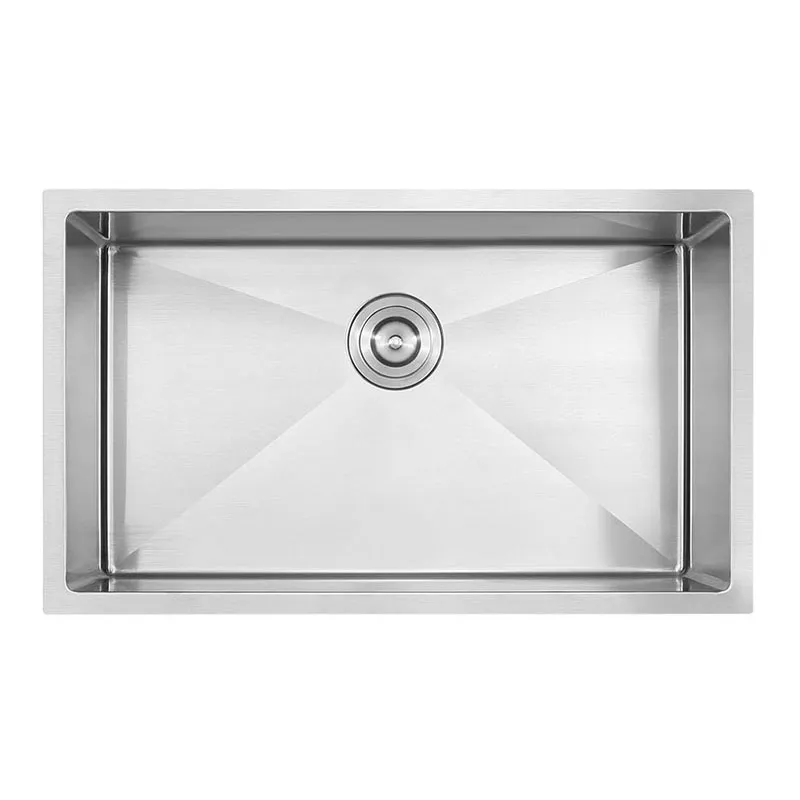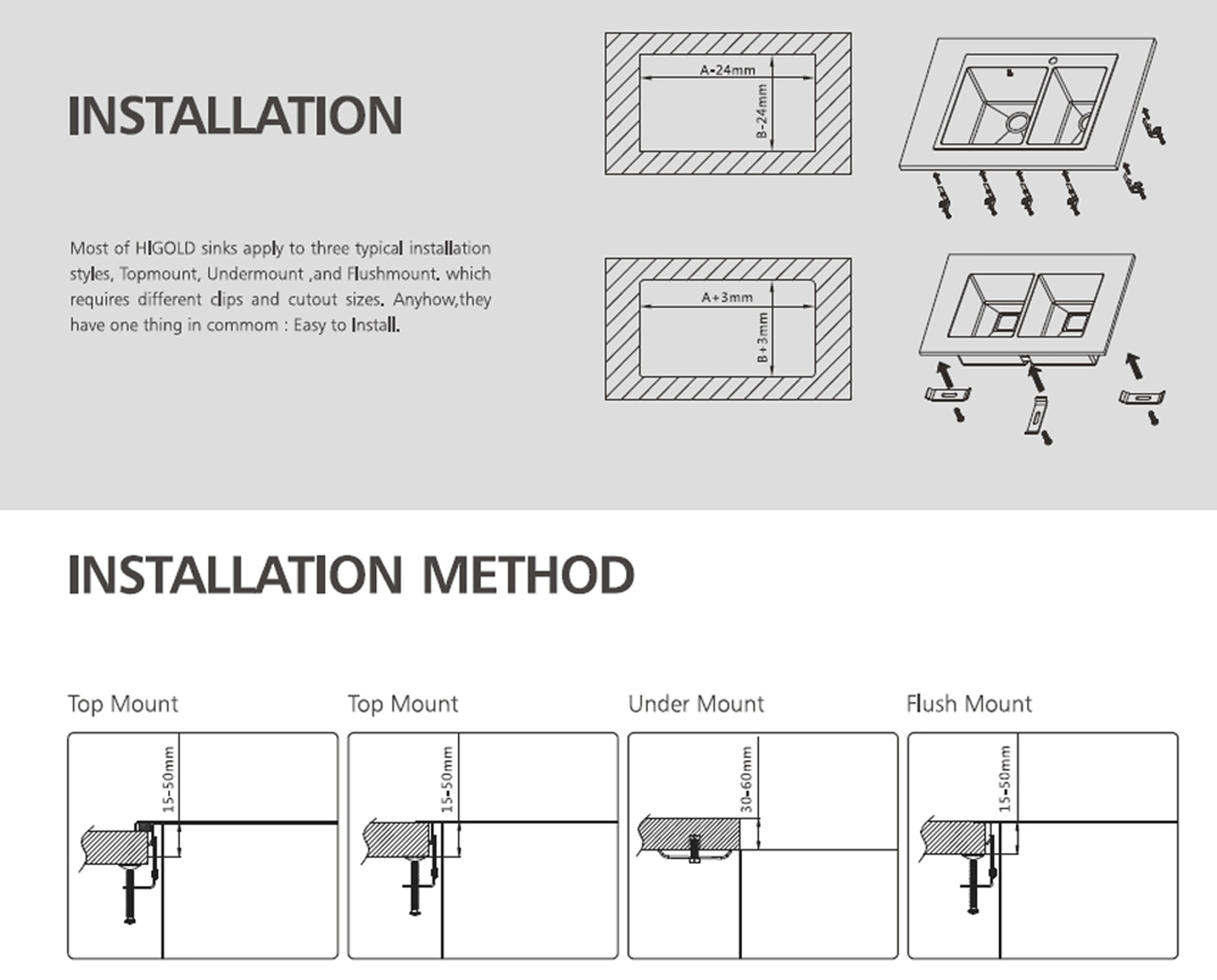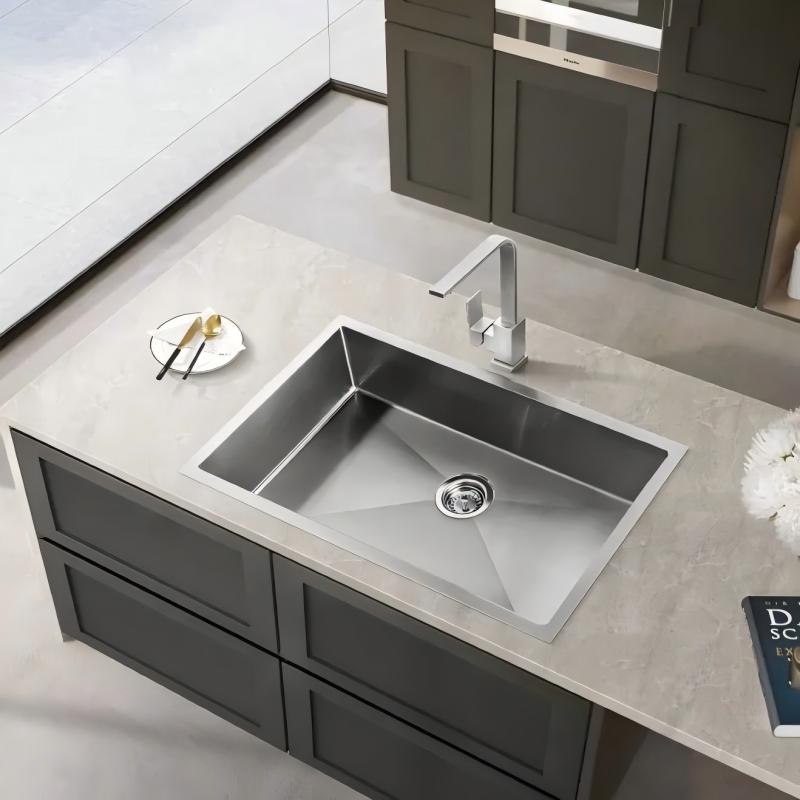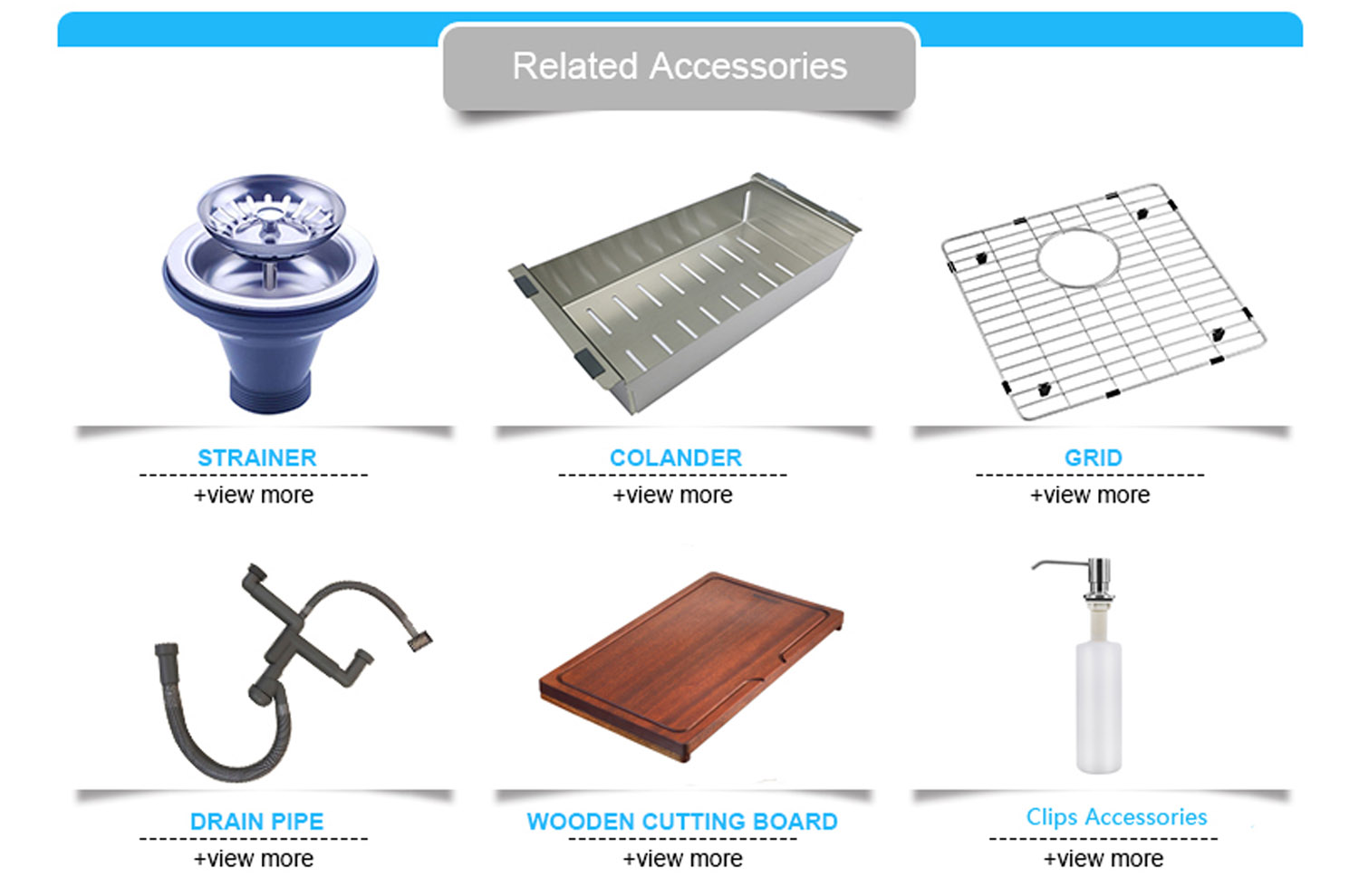The choice of sink is a crucial factor influencing the usability and aesthetics of a kitchen. As kitchen designs diversify, sink design and installation methods have also gradually evolved. Undermount kitchen sinks, in particular, are increasingly popular among consumers due to their unique design and superior functionality.
So, what are the advantages and disadvantages of undermount kitchen sinks? In this article, we will explore these in detail to help consumers make the best choice.

What is an undermount kitchen sink?
An undermount sink is a type of sink that is fixed beneath the countertop. Compared to traditional top-mount sinks, the rim of an undermount sink is hidden beneath the countertop, leaving the outer edge of the sink directly in contact with the countertop, while the countertop surface remains smooth.
This sink installation method creates a smoother transition between the countertop and the sink, resulting in a clean, modern look. Common undermount kitchen sink materials include stainless steel, quartz, and ceramic, suitable for a variety of kitchen designs.
What are the advantages of an undermount kitchen sink?
Advantages of Undermount Kitchen Sinks:
1. Beautiful and Clean
2. Easy to Clean
3. Better Space Utilization
4. Increased Countertop Space
5. Higher Durability

1. Beautiful and Clean
The most significant advantage of an undermount kitchen sink is its clean and aesthetic appearance. The sink rim is hidden beneath the countertop, leaving no gap between the sink and the countertop, eliminating the abrupt edge of traditional abovemount sinks. This design creates a clean and modern feel, particularly suitable for kitchens pursuing a minimalist or modern aesthetic. The seamless connection between the countertop and sink creates a more tidy and organized kitchen.
2. Easy to Clean
Another advantage of undermount sinks is their ease of cleaning. Because the sink rim is hidden beneath the countertop, with no seams or protruding parts, water flows smoothly into the sink during cleaning, preventing the accumulation of dirt and water stains. While traditional abovemount sinks often accumulate scale and dirt along their edges, undermount sinks eliminate this risk, making cleaning easier and more efficient.
3. Better Space Utilization
Undermount sinks typically offer greater usable space. Because the sink rim is recessed, countertop space is better utilized, eliminating wasted space around the sink. During kitchen operations, ingredients and utensils can be more easily slid into the sink, reducing the sense of congestion around the sink.
4. Increased Countertop Space Flexibility
Because the rim of an undermount sink is hidden beneath the countertop, the entire countertop appears flatter and more spacious. This creates a more fluid surface for easier work when preparing meals or cleaning ingredients or utensils. This is particularly important for families with limited kitchen space.
5. Greater Durability
Many undermount kitchen sinks, such as stainless steel and quartz, are inherently durable. When properly installed, undermount sinks generally offer greater durability than abovemount sinks. Quartz and stainless steel sinks, in particular, are more scratch-resistant and heat-resistant, making them better able to withstand the rigors of kitchen use.
What are the disadvantages of undermount kitchen sinks?
While undercounter kitchen sinks offer many advantages, they also have some disadvantages and limitations that consumers need to consider carefully when choosing one.
Disadvantages of Undermount Kitchen Sinks:
1. Installation difficulty
2. High maintenance costs
3. Not suitable for all countertop materials
4. High requirements for sink material quality
5. Countertop load-bearing issues
1. Installation difficulty
Undercounter sinks are more complex to install than above-counter sinks. The countertop must be precisely cut before installation, and the sink edge must fit snugly against the underside of the countertop. This requires a high level of skill from the installer. Improper installation can result in a poor seal, leading to leaks.
2. High maintenance costs
Because undercounter sinks are a complex installation process, repairing leaks or other problems can be difficult. Sometimes, the countertop must be disassembled or resealed, which increases maintenance costs. Furthermore, the sealing strips of undercounter sinks require regular inspection and replacement, as this can compromise their waterproofing.
3. Not Suitable for All Countertop Materials
Not all countertop materials are suitable for undermount sinks. For example, some thinner stone, wood, or composite countertops may not be suitable for undermount sinks. This is because the installation method for undermount sinks requires sufficient support and strength between the sink and the countertop. If the countertop is not strong enough or properly reinforced, the sink may sink or become loose, affecting its lifespan.
4. High Requirements for Sink Material
Undermount sinks generally require more durable materials, such as stainless steel or quartz. These materials are relatively expensive, so undermount sinks are usually more expensive than abovemount sinks. Furthermore, sinks made of more fragile materials may be prone to cracking or breaking during installation or after long-term use.
5. Countertop Load-Bearing Issues
Because undermount sinks are installed from below, the countertop must support a certain amount of weight. Some thinner countertops (such as some composite stone countertops) may not provide sufficient support when installing the sink, which can easily cause the countertop to warp or the sink to become unstable. Therefore, special care should be taken when choosing the countertop material and thickness.

Which homes are suitable for undercounter kitchen sinks?
While undercounter kitchen sinks offer many advantages, they require more installation and use, making them unsuitable for all homes. Undercounter kitchen sinks may be more suitable in the following situations:
1. Homes Pursuing a Modern, Simple Style
Undercounter kitchen sinks are suitable for homes seeking a modern, simple, and high-end feel. If the kitchen is large and the decor tends to be minimalist or modern, an undercounter sink can add a more modern and aesthetic touch and be easier to clean.
2. Homes with Spacious Kitchens
Undercounter kitchen sinks require a certain amount of space for installation, especially since the countertop requires precise cutting and adjustment. Therefore, they are more suitable for homes with more spacious kitchens. For smaller kitchens, undercounter sinks may be less suitable due to the installation difficulties.
3. Households willing to bear certain installation and maintenance costs
Undermount sinks have relatively high installation and maintenance costs, so if a household can accept these additional expenses, an undermount sink can be a good choice. The durability of an undermount sink is particularly advantageous for households with long-term use.

What makes Higold suitable for project-based kitchen hardware supply?
Higold has extensive experience supplying kitchen sinks and faucets for large-scale residential, hospitality, and commercial projects. The company’s strong production capacity and customization services ensure consistent quality and flexible lead times.
Project contractors benefit from professional quoting, technical drawings, and responsive support throughout the procurement cycle. Whether you need 200 or 20,000 sinks, Higold can scale to meet your project requirements efficiently.


